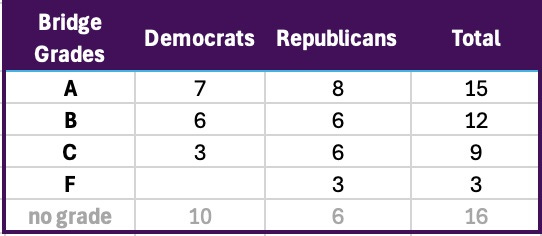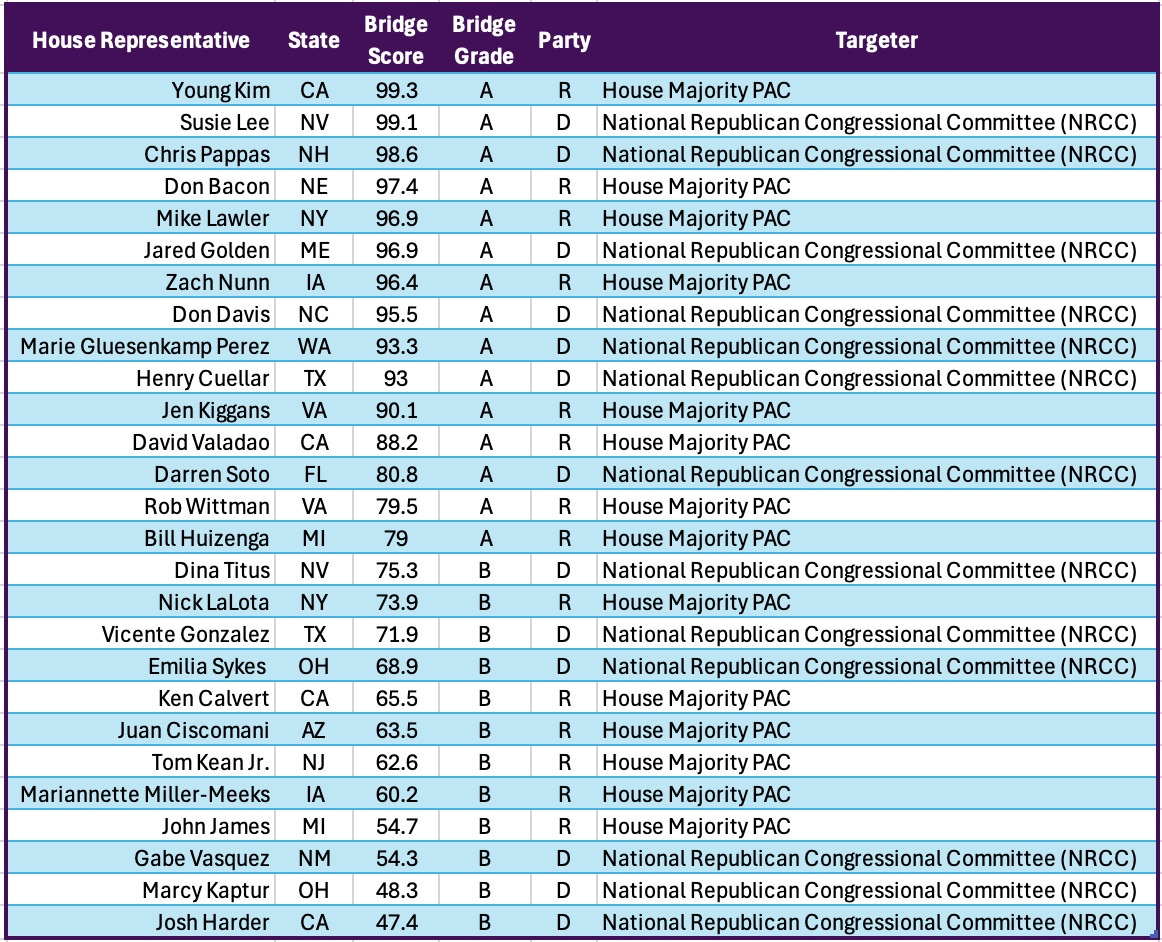The witch hunt of bipartisan collaborators in Congress by partisan interests is asinine
Hard leaning partisan interests are coming after bridge builders in both parties, and that's bad news for citizens
Yesterday No Labels reported that partisan interests are targeting Congressional leaders from both parties in their article “Congress’ Most Vulnerable Members? Those Brave Enough to Work Across the Aisle.” They point out that “Members who do the difficult, necessary work of building consensus should be rewarded, not punished.” We agree.
The article cites sources that the National Republican Congressional Committee (NRCC) has targeted 26 Democratic representatives in the House that are in their crosshairs, while the House Majority PAC who is aligned with Democratic leader Hakeem Jeffries has their own list of 29 Republican targets who they are coming after.
No Labels made the point that several brave representatives who are active in bipartisan efforts are featured in both lists, so we thought it would be interesting to analyze the lists and look at their Bridge Grades from last term.
Sure enough, collaborative bridgers from both sides are over-indexed on both of these lists—indicating the problematic dynamic that partisan interests seek even more division in Congress than we have today (if that’s even possible).
Let’s dig into the data.
Of the 55 targeted representatives, 39 served in the prior Congress, while 16 are Freshmen. We therefore have Bridge Grades for the 39 who served last term, while we are still compiling grades for the current term (targeting mid-term grades this summer).
Of the 39 who served in the last Congress, 69% are graded as bridgers (As and Bs) and 31% are dividers (Cs and Fs). Note that the distribution in the House is 50/50 bridgers and dividers (based on a grading curve), so these numbers indicate a special focus the partisan interests have in eliminating those who have the gall to legislate through building coalitions for our common interests.
This is asinine. The American public wants more collaboration and governance through common interests, not less. You wouldn’t know it, though, because the partisan interests have been so successful in threatening, muting, primarying, and drowning out the legislators who are doing the difficult and brave work of writing and sponsoring bipartisan legislation.
Big money coming after these bridgers is bad for the public. As citizen voters, it’s important that we better reward and support bridgers from both parties, as these are the leaders who listen to their stakeholders and find areas of common interest for our mutual benefit.
While big money PACs and partisan organizations come after our best legislators, let’s do better to protect and reward Congressional bridgers. Here’s the data on these bridgers under threat.
One final point to make here. As you scan the names of these bridgers who are under threat by big partisan forces, see how many of the names you are familiar with, or might consider a household name. Any?
It’s striking that the dividers in Congress who are splitting the public apart are the ones who are famous and get all of our (and the media’s) attention.
Let’s change the game, and make bridgers more famous for the benefit of a more plural nation.
Please share, subscribe and follow this space, as we bring objective data and grading to politicians and hold them accountable to their rhetoric and legislative records.
Bridge Grades are a non-ideological report card for politicians. Instead of red or blue, Bridge Grades sort bridgers from dividers. Rational and reasonable political leaders exist in both parties, and we use objective data to find them. Using 3rd party data, we grade politicians on their abilities to collaborate and build consensus solutions for the common interests of multiple parties. In aggregating data from multiple non-partisan 3rd party sources, Bridge Grades, something like Rotten Tomatoes for politicians, measures not “what” a politician thinks, but rather “how” the politician behaves.






So right. Great article
I did not know any of the names on the Bridgers list, and agree these should be the ones we know best. I was impressed with how many states the Bridgers group cuts across. Thanks for these articles - keep ‘em coming!